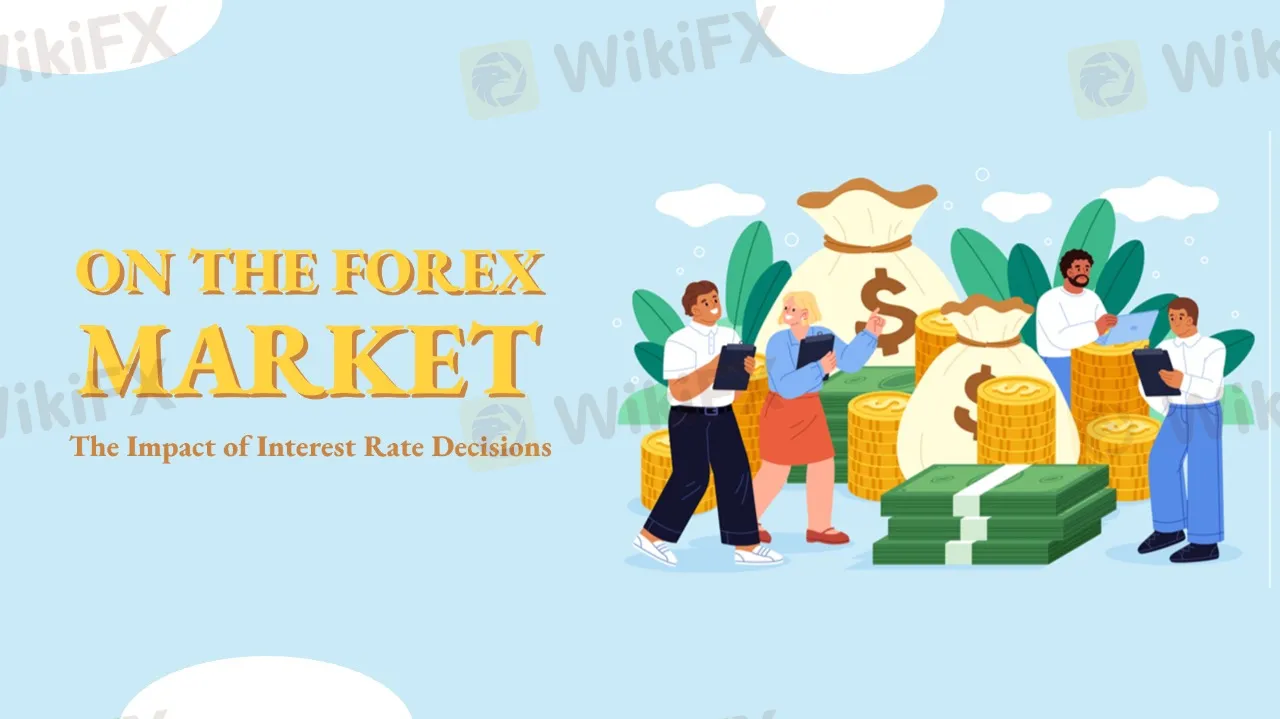简体中文
繁體中文
English
Pусский
日本語
ภาษาไทย
Tiếng Việt
Bahasa Indonesia
Español
हिन्दी
Filippiiniläinen
Français
Deutsch
Português
Türkçe
한국어
العربية
The Impact of Interest Rate Decisions on the Forex Market
Abstract:Interest rate changes determine currency attractiveness, influencing capital flows and exchange rate trends. Understanding this mechanism helps investors navigate the forex market effectively.

Interest rates are a key indicator of capital costs, affecting borrowing expenses and savings returns. In the forex market, investors seek higher yields, meaning capital often flows to countries with higher interest rates. For instance, in the early 2000s, Australia maintained high interest rates, making the Australian dollar a preferred currency for forex traders. Conversely, low interest rates usually lead to capital outflows, putting pressure on the currency. A notable example is the U.S. Federal Reserve lowering rates to near zero in 2020, causing the U.S. dollar to weaken.
How Do Interest Rates Influence the Market?
Interest rate decisions impact both short-term exchange rate fluctuations and long-term market trends.
Rate hikes increase borrowing costs, encourage saving, and attract foreign investment. For example, the Federal Reserves consecutive rate hikes in 2022 strengthened the U.S. dollar against major currencies like the euro and the yen.
Rate cuts lower investment returns and can lead to currency depreciation. In 2014, the European Central Bank introduced negative interest rates, causing the euro to weaken.
Market expectations play a crucial role. Even if a central bank does not change interest rates, expectations of future hikes can drive a currencys value higher. In 2023, the Bank of England hinted at possible rate hikes, leading to an appreciation of the British pound.
How Should Investors Respond?
Investors should monitor key central bank policies, such as those of the Federal Reserve, European Central Bank, and Bank of Japan, while also considering other factors like inflation and GDP growth.
Carry trade opportunities: Investors can hold positions in high-interest-rate currencies, such as going long on AUD/JPY, to earn interest rate differentials.
Tracking the bond market: The yield curve can provide insights into future interest rate trends. For instance, rising U.S. 10-year Treasury yields often indicate a strengthening U.S. dollar.
Adjusting strategies dynamically: If the market expects rate cuts, investors may shift towards safe-haven assets like gold or the Swiss franc to mitigate risks.
Interest rate decisions are a fundamental driver of the forex market. Investors need to analyze policies, market sentiment, and economic data holistically to seize trading opportunities amid market fluctuations.

Disclaimer:
The views in this article only represent the author's personal views, and do not constitute investment advice on this platform. This platform does not guarantee the accuracy, completeness and timeliness of the information in the article, and will not be liable for any loss caused by the use of or reliance on the information in the article.
Read more

OctaFX Flagged by Malaysian Authorities
OctaFX has been officially listed on warning lists by both Bank Negara Malaysia (BNM) and the Securities Commission Malaysia (SC). These alerts raise serious concerns about the broker’s status and whether it is legally allowed to operate in Malaysia.

TradingPRO: A Closer Look at Its Licences
In an industry where safety and transparency are essential, the regulatory status of online brokers has never been more important. For traders seeking to protect their capital, ensuring that a platform operates under recognised and stringent oversight can make all the difference. Keep reading to learn more about TradingPRO and its licenses.

Oil Price Breakout Incoming? Investors Should Stay Alert
Oil prices are hovering around a critical level, with potential yet to be fully unleashed. Investors must prepare for sudden changes.

New SEBI Regulations on Intraday Trading
The Securities and Exchange Board of India (SEBI) has implemented revised regulations on Intraday trading, with effect from November 20, 2024. These regulations are meant to lessen risks and prevent speculative trading practices.
WikiFX Broker
Latest News
How much money will you earn by investing in Vantage Broker?
IronFX vs Exness Review 2025: Comprehensive Broker Comparison
Fraudsters Are Targeting Interactive Brokers' Users with Lookalike Emails
Interactive Brokers: Global Office Visits and Licensing Details
Top Tips to Choose the Best Forex Broker in 2025
SEBI Notifies New F&O Rules for Investors - New Derivative Trading Limits & More Amendments
U.S. Jobs Data Released: A Potential Boost for Gold Prices
SkyLine Guide 2025 Malaysia: 100 Esteemed Judges Successfully Assembled
Everything you need to know about ADSS
Vantage Markets Review 2025: Trusted Forex and CFD Trading Since 2009
Currency Calculator


